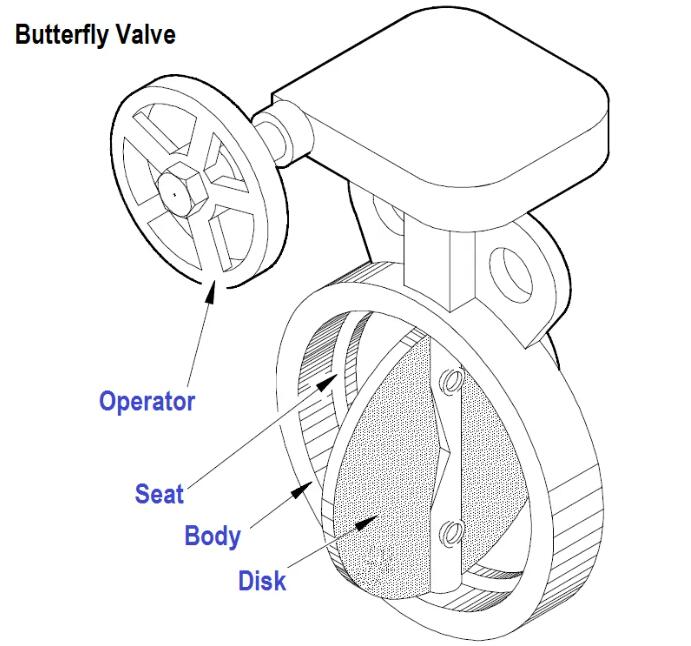Aug. 08, 2022
A butterfly valve is a rotary motion valve that is used to stop, regulate, and start fluid flow. Butterfly valves are easily and quickly operated because a 90o rotation of the handle moves the disk from a fully closed to fully opened position.
Larger butterfly valves are actuated by hand-wheels connected to the stem through gears that provide mechanical advantage at the expense of speed.
Butterfly valves possess many advantages over gate, globe, plug, and ball valves, especially for large valve applications.
Savings in weight, space, and cost are the most obvious advantages. The maintenance costs are usually low because there are a minimal number of moving parts and there are no pockets to trap fluids.
Butterfly valves are especially well-suited for the handling of large flows of liquids or gases at relatively low pressures and for the handling of slurries or liquids with large amounts of suspended solids.
Butterfly valves are built on the principle of a pipe damper. The flow control element is a disk of approximately the same diameter as the inside diameter of the adjoining pipe, which rotates on either a vertical or horizontal axis.
When the disk lies parallel to the piping run, the valve is fully opened. When the disk approaches the perpendicular position, the valve is shut. Intermediate positions, for throttling purposes, can be secured in place by handle-locking devices.

Stoppage of flow is accomplished by the valve disk sealing against a seat that is on the inside diameter periphery of the valve body.
Many butterfly valves have an elastomeric seat against which the disk seals. Other butterfly valves have a seal ring arrangement that uses a clamp-ring and backing-ring on a serrated edged rubber ring.
This design prevents extrusion of the O-rings. In early designs, a metal disk was used to seal against a metal seat.
This arrangement did not provide a leak-tight closure, but did provide sufficient closure in some applications (i.e., water distribution lines).
Butterfly valve body construction varies. The most economical is the wafer type that fits between two pipeline flanges.
Another type, the lug wafer design, is held in place between two pipe flanges by bolts that join the two flanges and pass through holes in the valve’s outer casing.
Butterfly valves are available with conventional flanged ends for bolting to pipe flanges, and in a threaded end construction.
The stem and disk for a butterfly valve are separate pieces. The disk is bored to receive the stem. Two methods are used to secure the disk to the stem so that the disk rotates as the stem is turned. In the first method, the disk is bored through and secured to the stem with bolts or pins.
The alternate method involves boring the disk as before, then shaping the upper stem bore to fit a squared or hex-shaped stem.
This method allows the disk to “float” and seek its center in the seat. Uniform sealing is accomplished and external stem fasteners are eliminated. This method of assembly is advantageous in the case of covered disks and in corrosive applications.
In order for the disk to be held in the proper position, the stem must extend beyond the bottom of the disk and fit into a bushing in the bottom of the valve body.
One or two similar bushings are along the upper portion of the stem as well. These bushings must be either resistant to the media being handled or sealed so that the corrosive media cannot come into contact with them.
Stem seals are accomplished either with packing in a conventional stuffing box or by means of O-ring seals.
Some valve manufacturers, particularly those specializing in the handling of corrosive materials, place a stem seal on the inside of the valve so that no material being handled by the valve can come into contact with the valve stem.
If a stuffing box or external O-ring is employed, the fluid passing through the valve will come into contact with the valve stem.